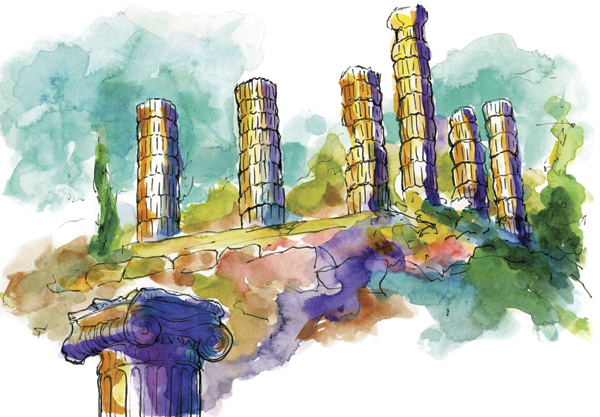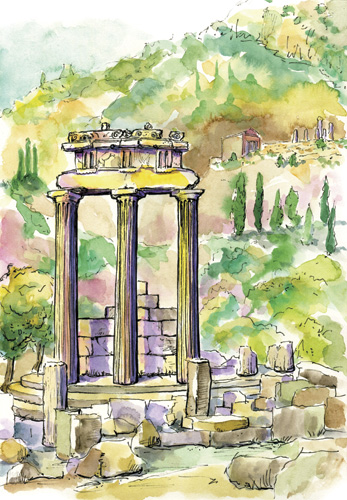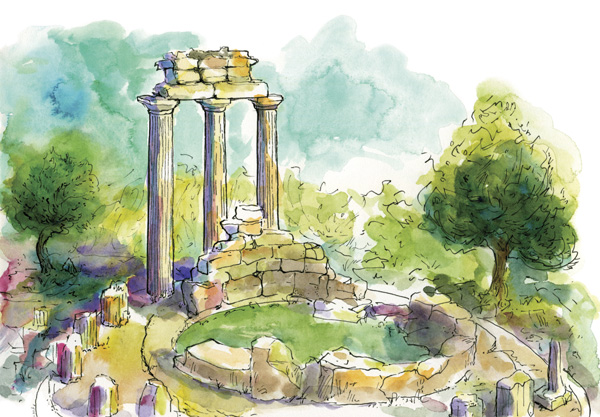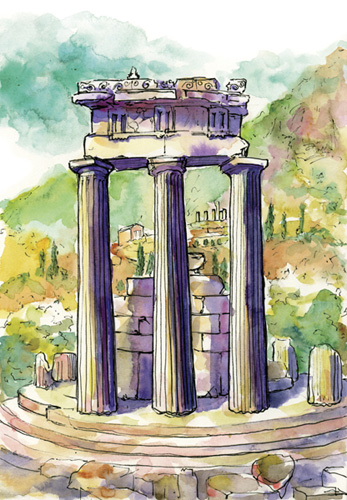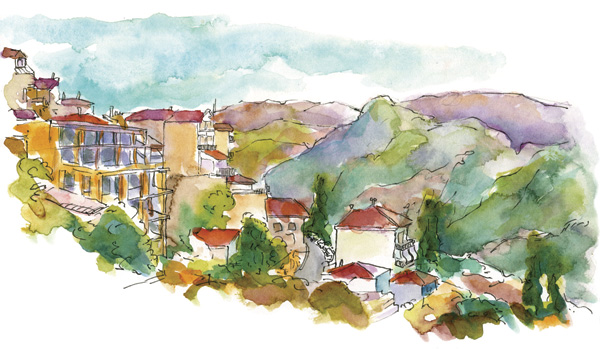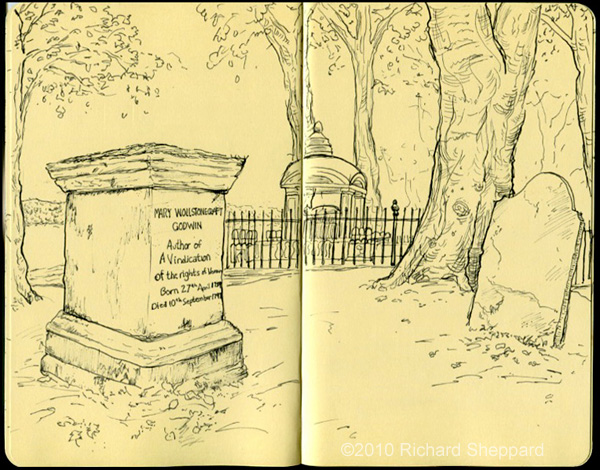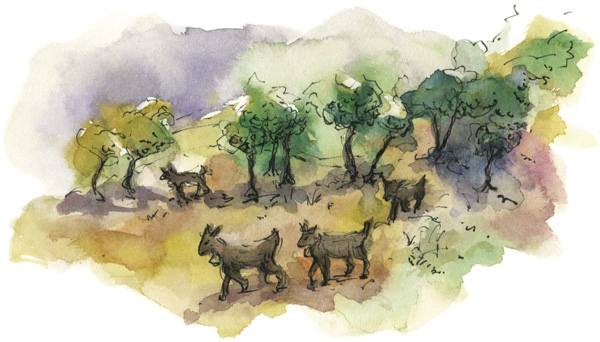I move my gear to another structure just below the Temple of Apollo, the Treasury of the Athenians, and set up shop. This should be a good spot for painting, and it’s probably the last one I’ll have time for today. I pick up my packet of finished paintings and glance through them. It’s ironic that all the paintings look so tranquil, as if I were the only one there. In reality it’s quite the opposite, as hordes of people in tour groups continually pass by while I draw. This demonstrates one advantage of drawing over photography. Not far off, I notice a person drawing in a sketchbook, the first artist I’ve seen drawing so far. My first thought is to go say hello since I wouldn’t mind talking to another artist, but she looks shy, or at least shows a desire not to be bothered, so I leave her be.
With daylight now beginning to fade, I finish my last painting and walk back to the hotel

